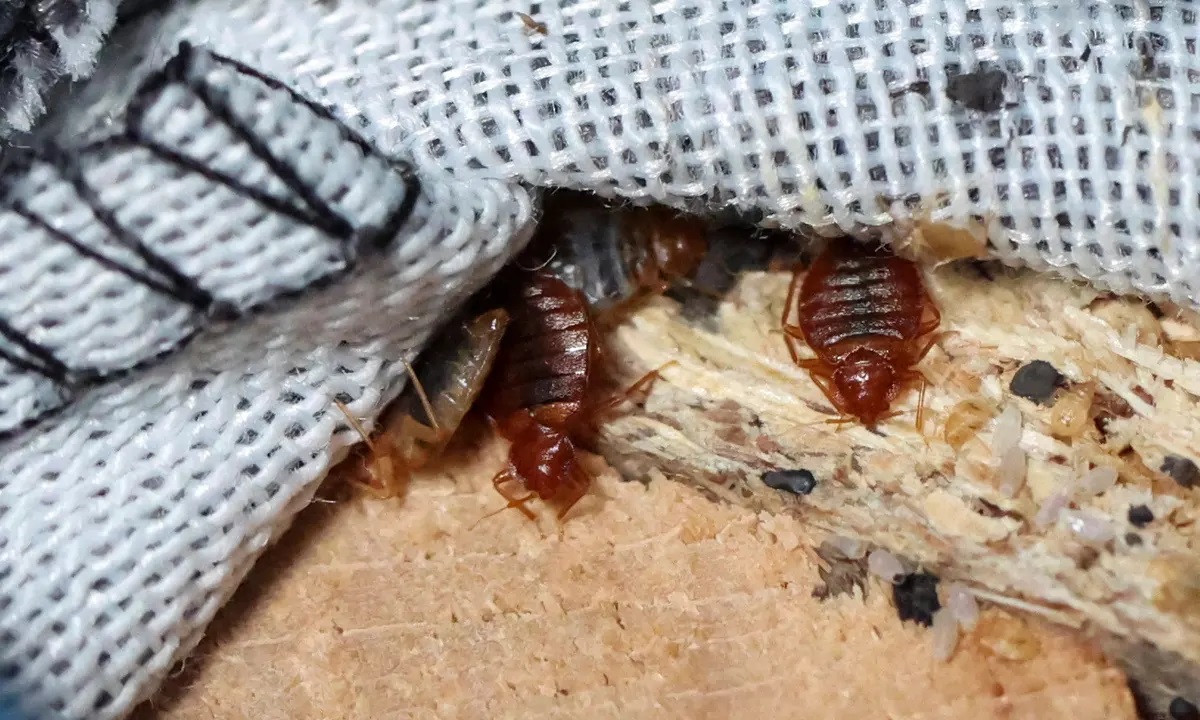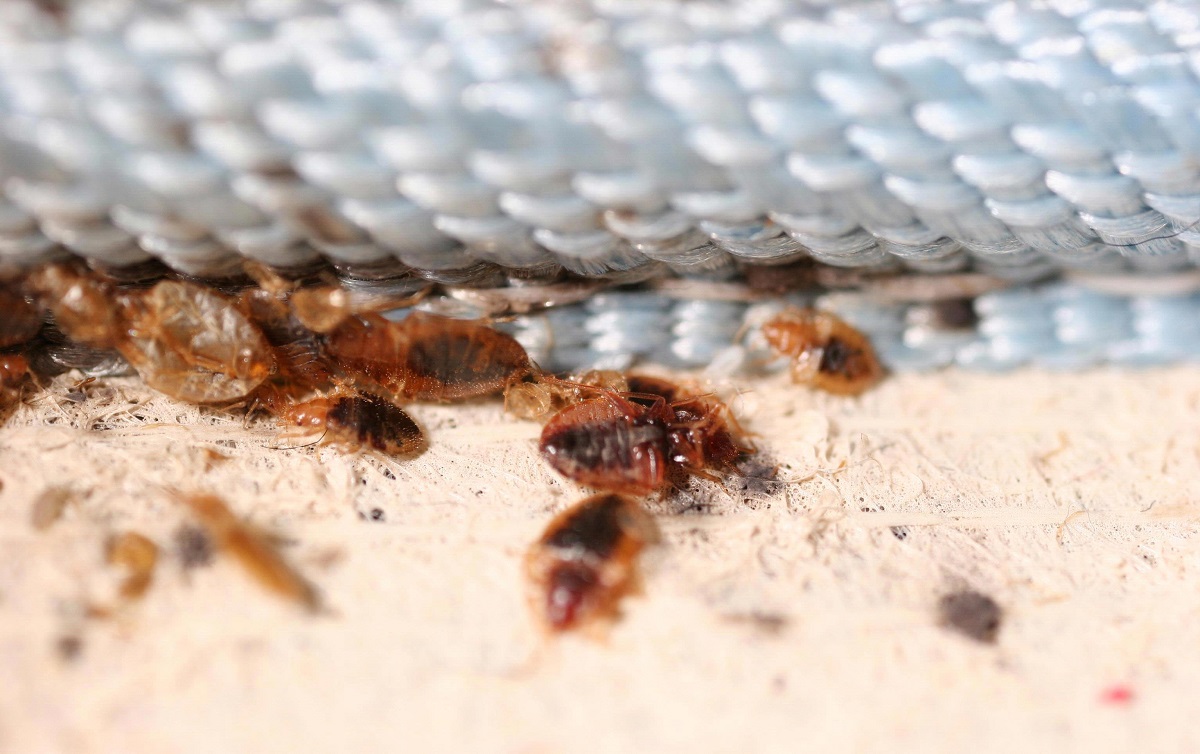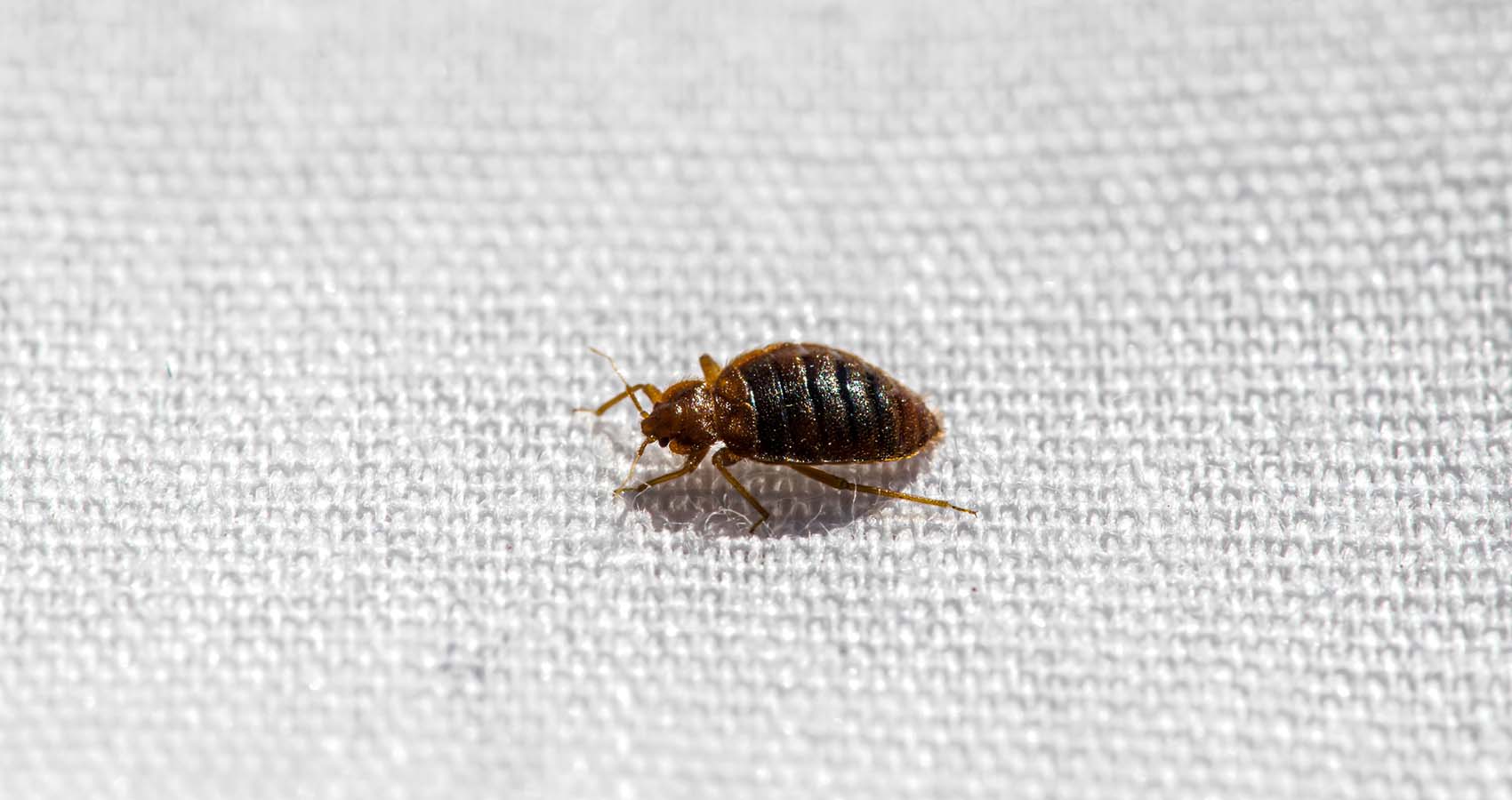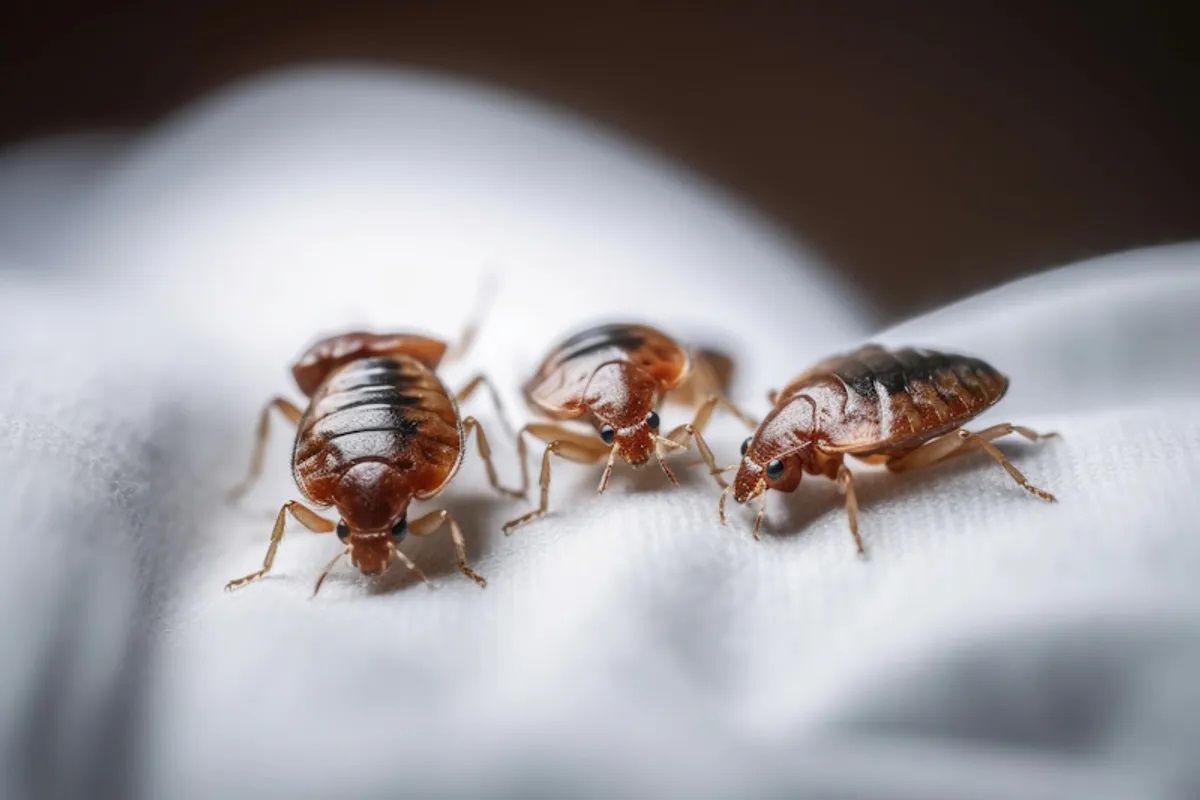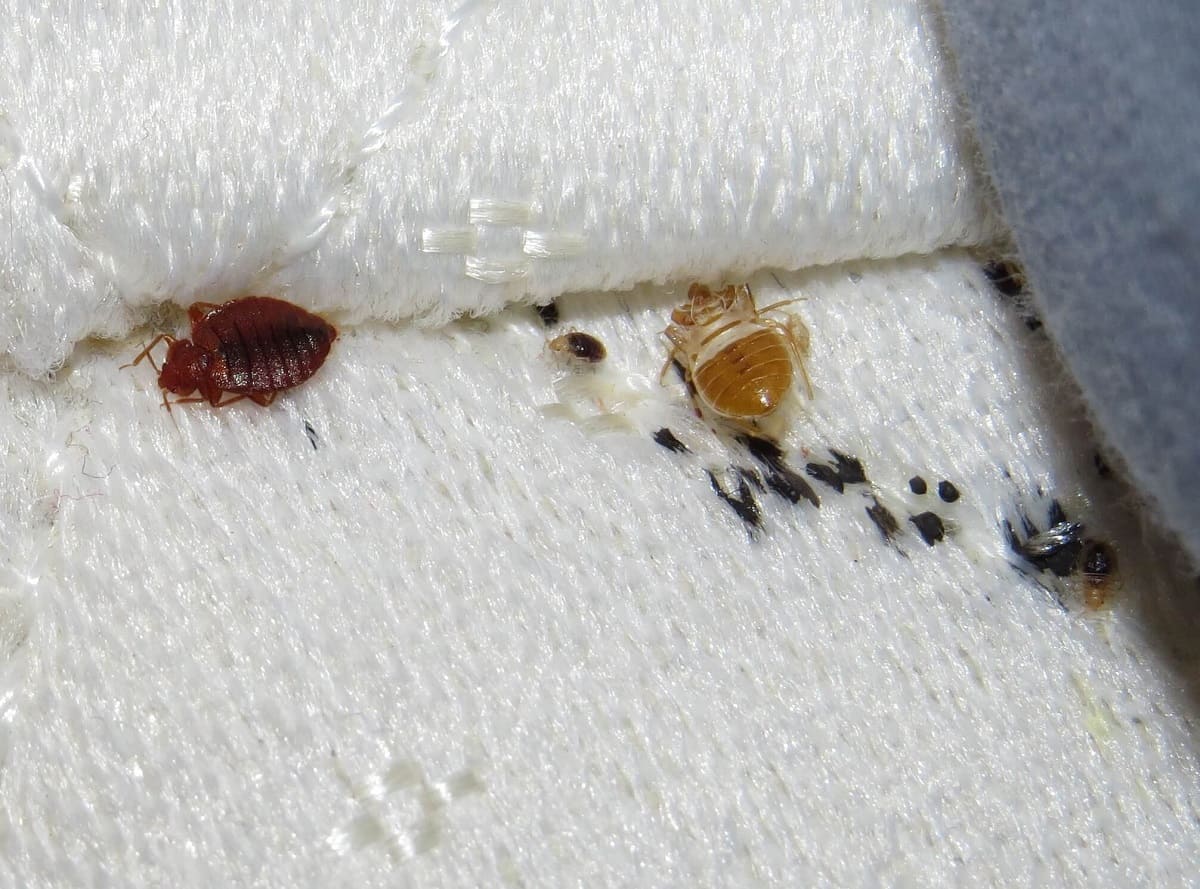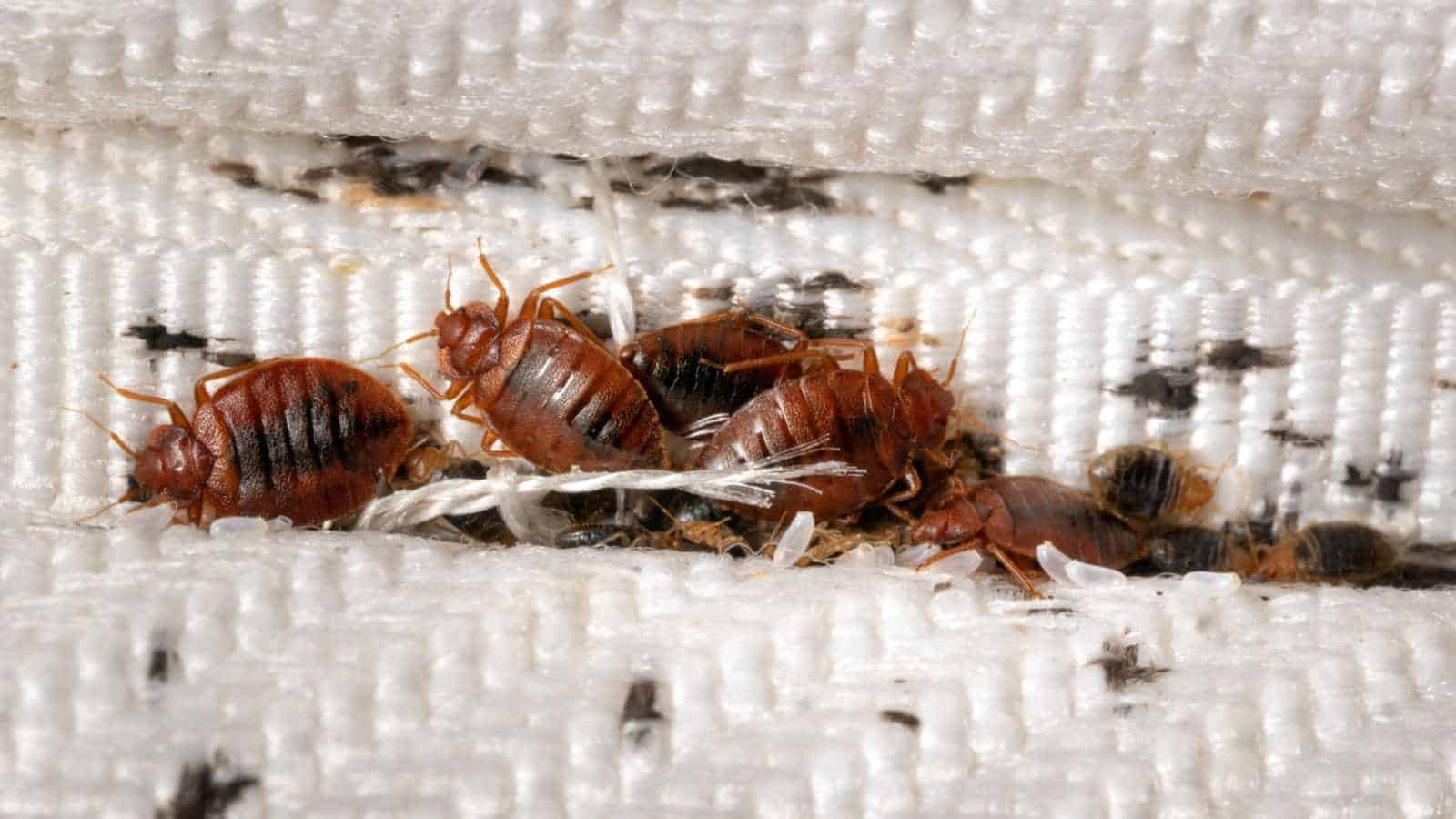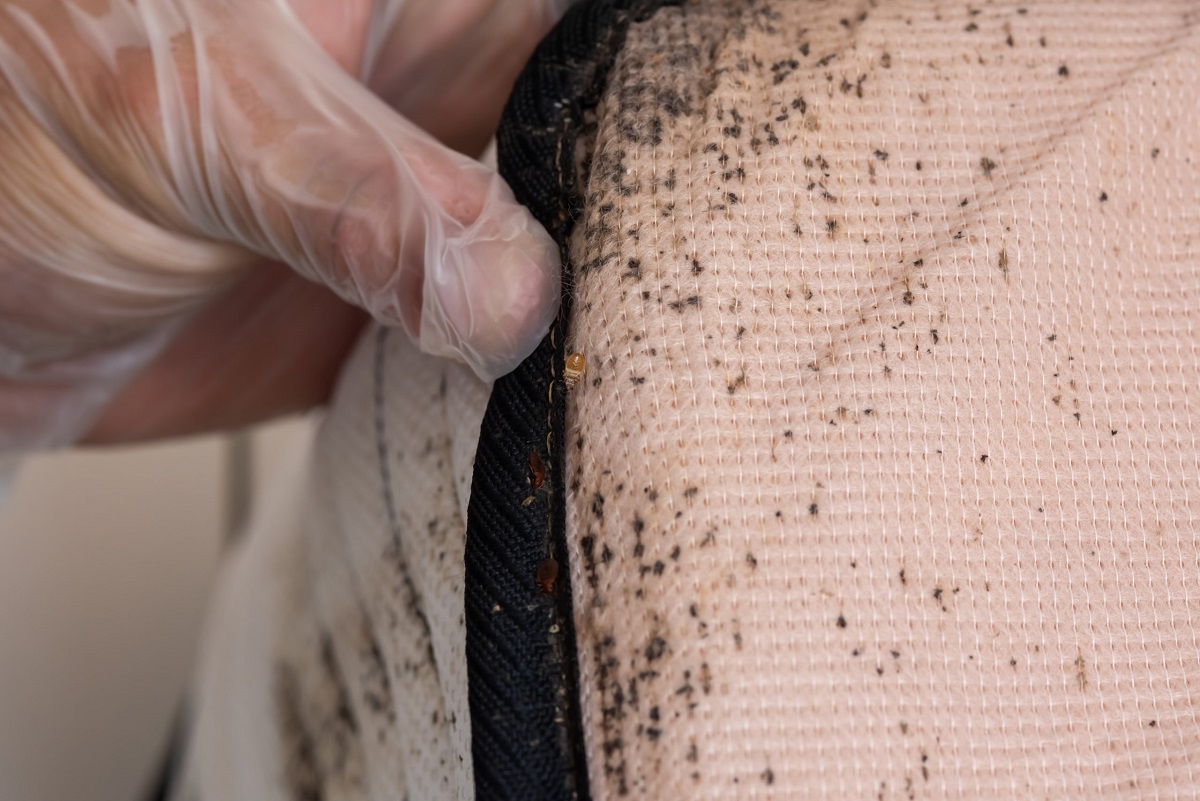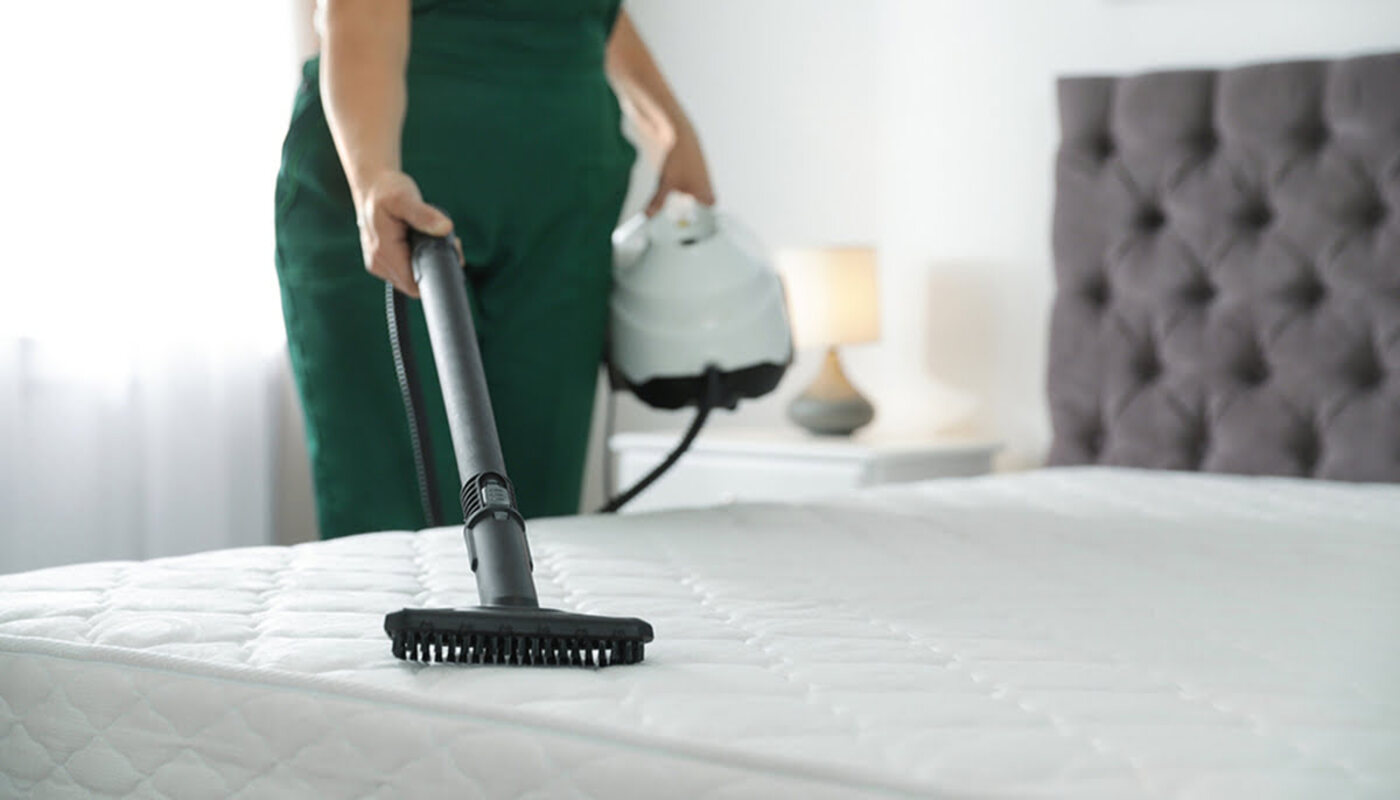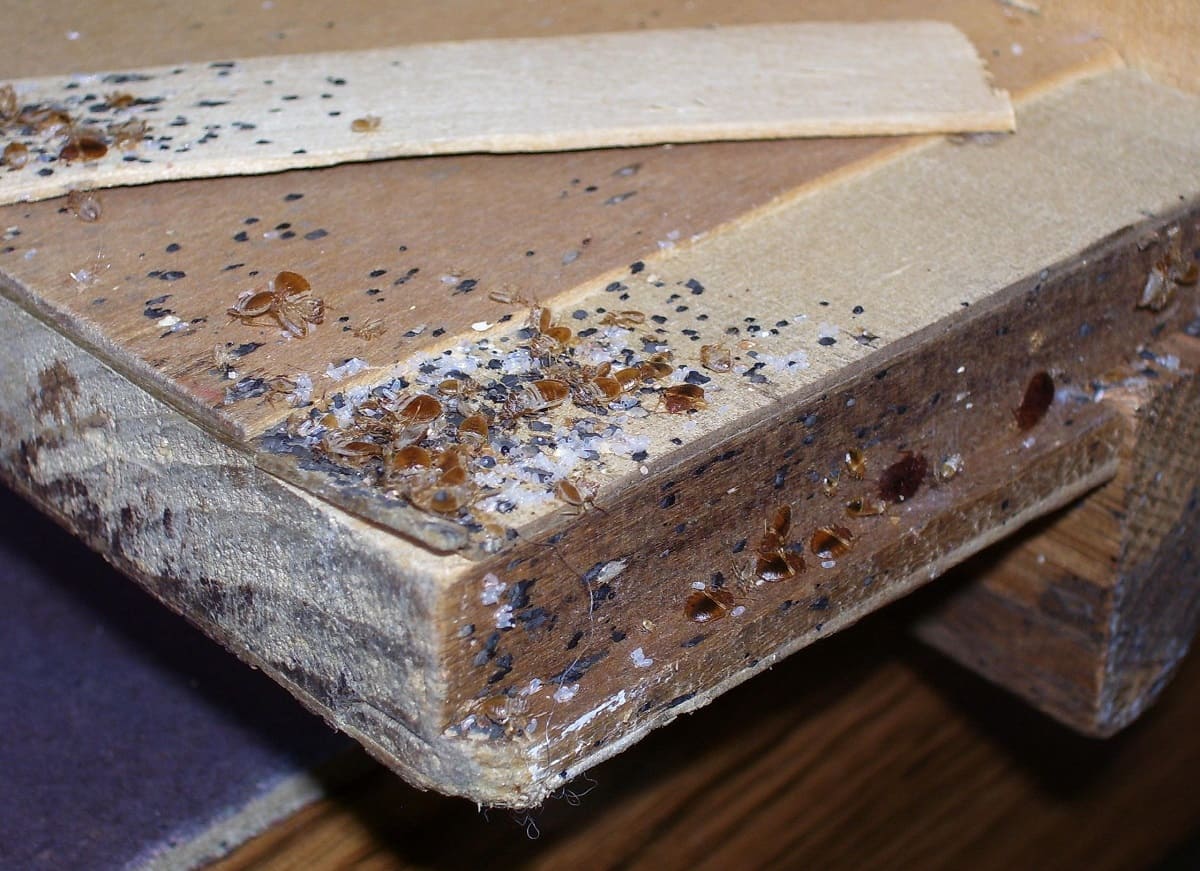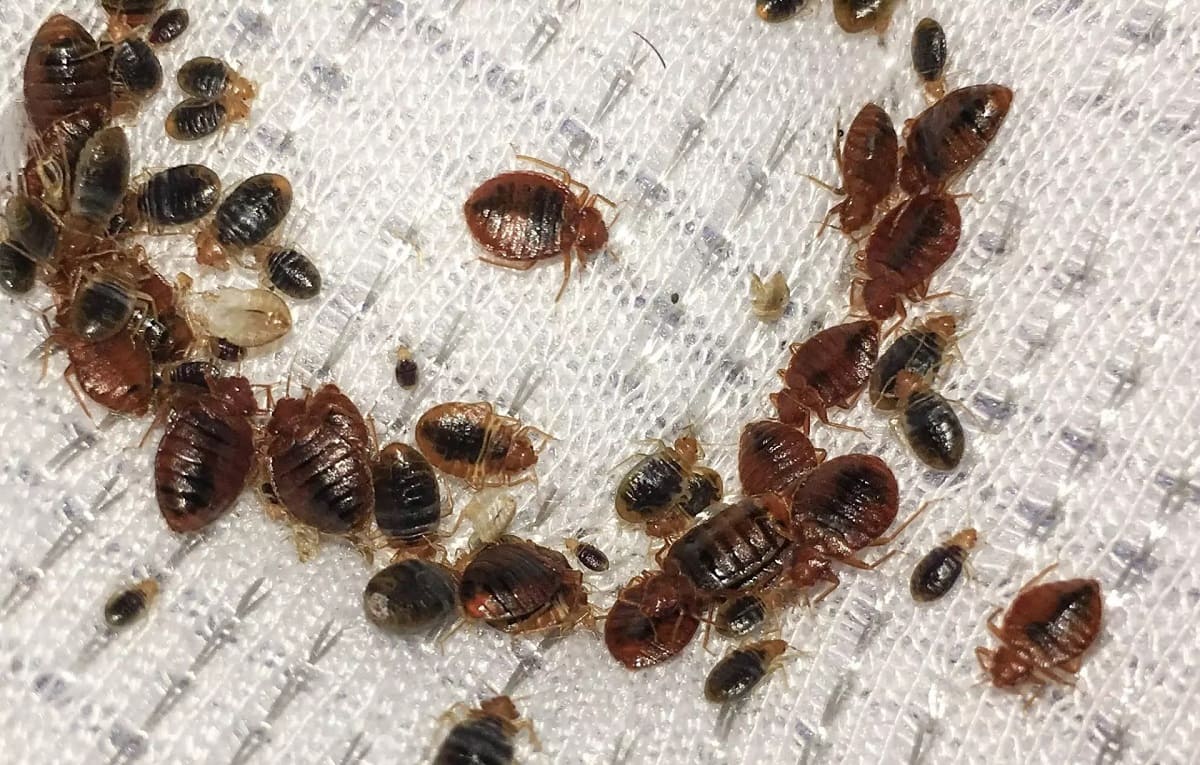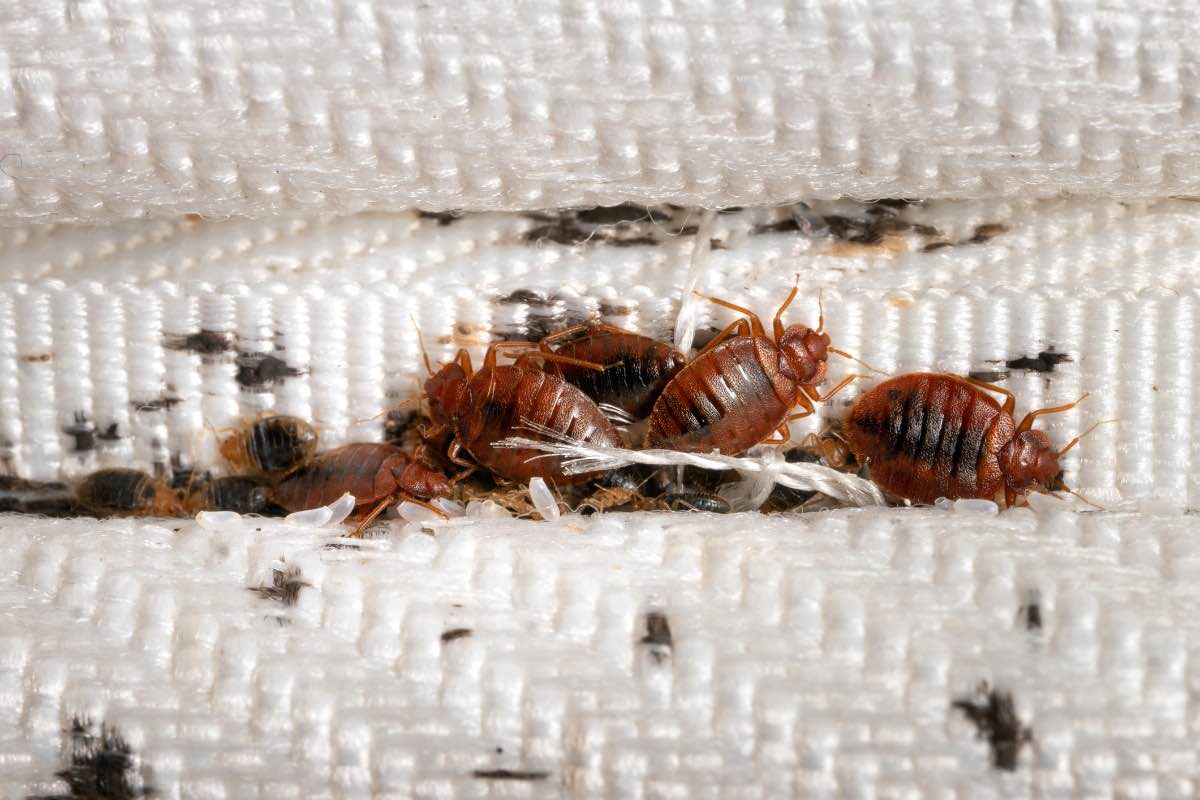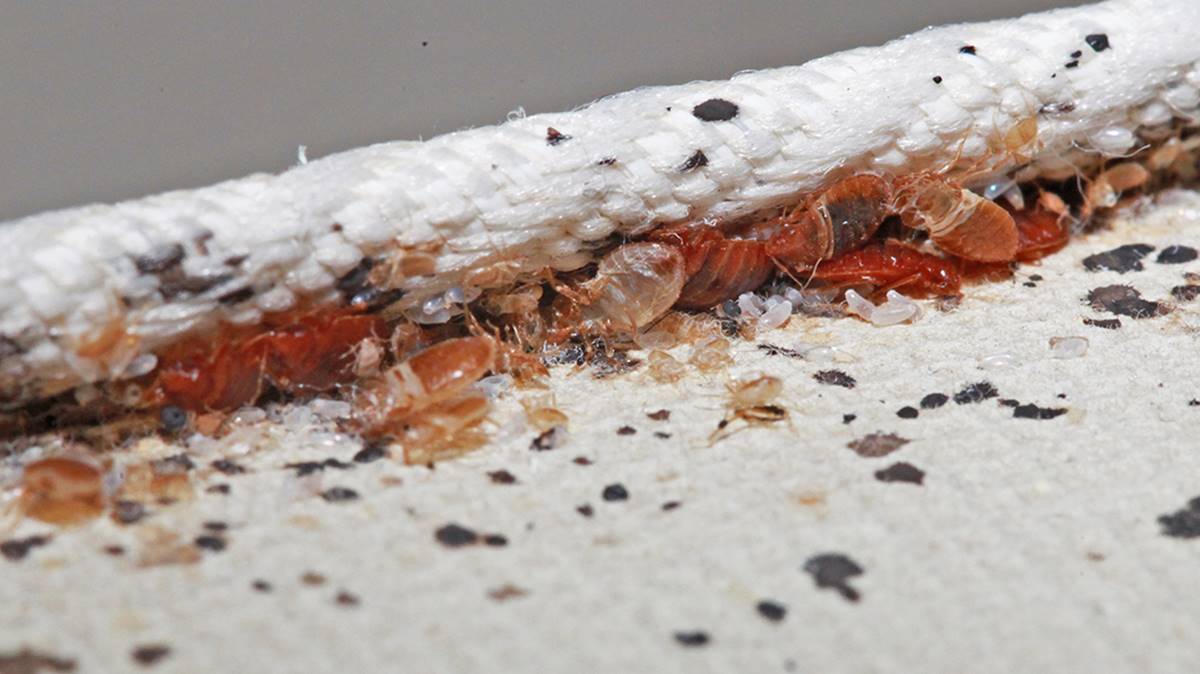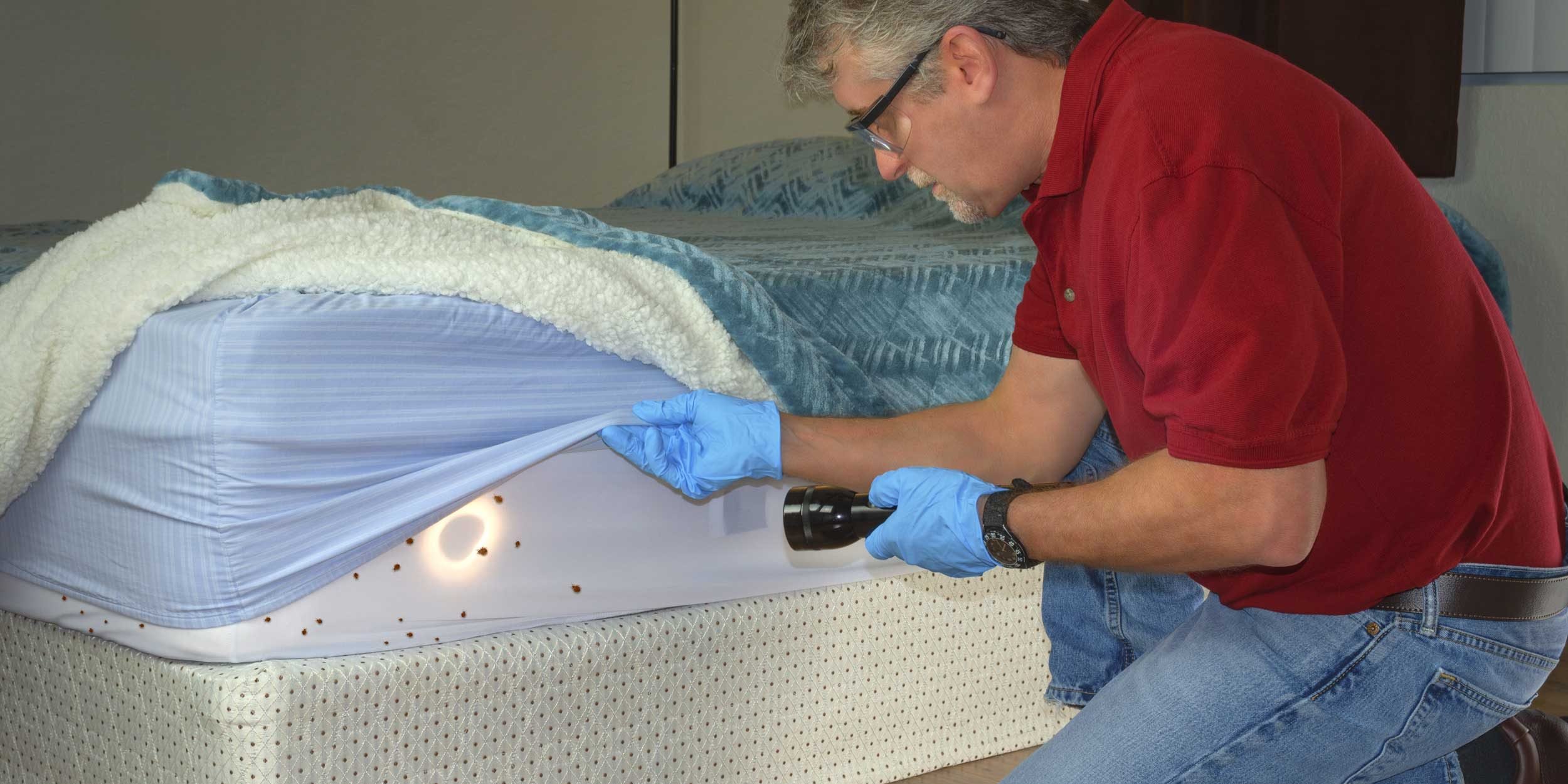Home>Furniture>Bedroom Furniture>Where Do Bed Bugs Live
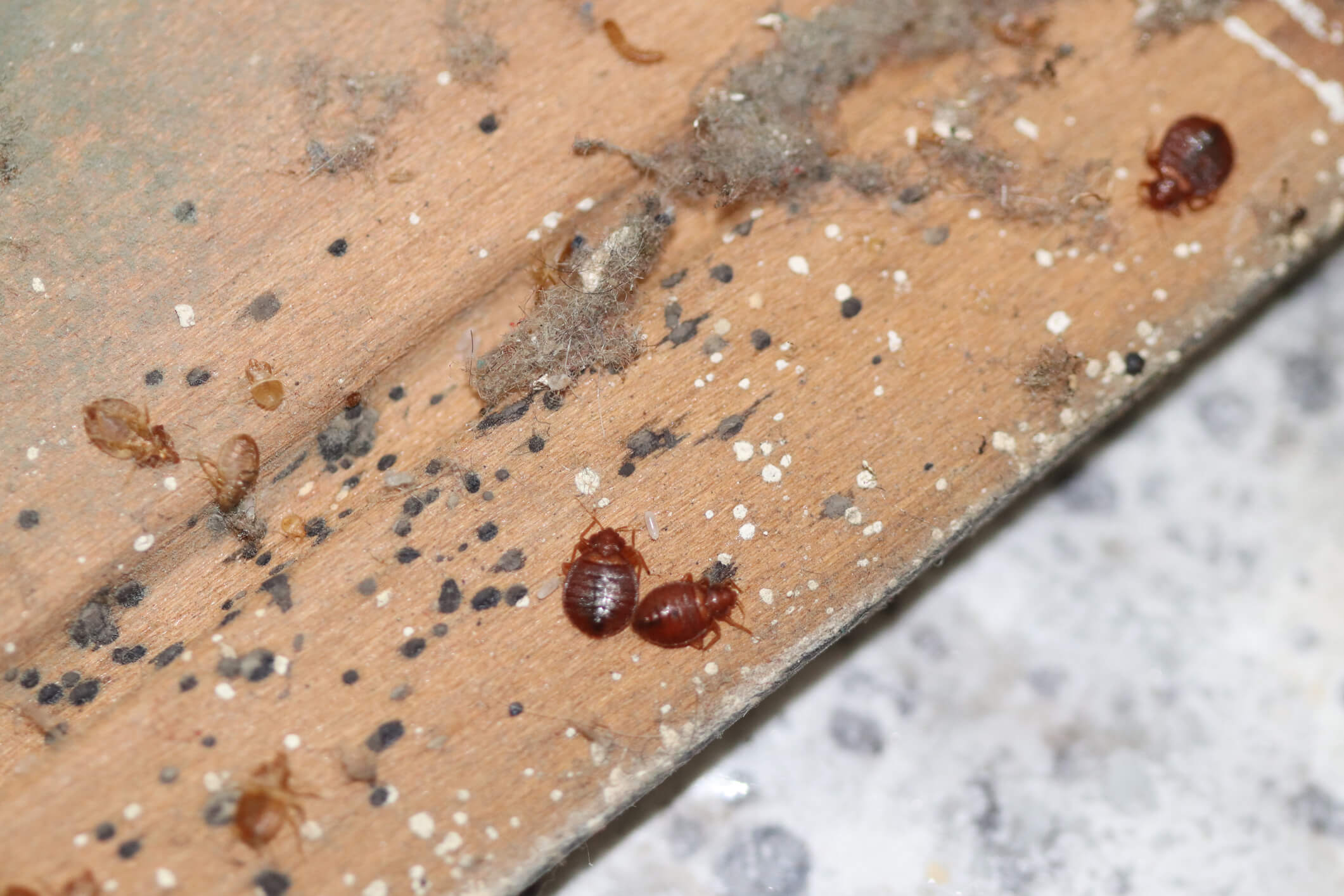

Bedroom Furniture
Where Do Bed Bugs Live
Modified: September 1, 2024
Discover where bed bugs live and how to keep them away from your bedroom furniture. Find effective solutions to prevent bed bug infestations.
(Many of the links in this article redirect to a specific reviewed product. Your purchase of these products through affiliate links helps to generate commission for Storables.com, at no extra cost. Learn more)
Introduction
Bed bugs are small, parasitic insects that have plagued human beings for centuries. These tiny creatures are notorious for their ability to infest any space where they can find a meal, and unfortunately, our bedrooms are a prime target. Bed bugs feast on human blood, and their bites can cause itchy red welts and a host of other health issues.
In order to effectively combat and prevent bed bug infestations, it is crucial to understand where these pests live and thrive. By knowing their common habitats, you can take the necessary steps to protect yourself and your home from these unwanted guests. This article will explore the various places where bed bugs are commonly found and provide insights on how to prevent and eliminate these pesky insects.
Key Takeaways:
- Stay vigilant and proactive in preventing bed bug infestations by regularly inspecting sleeping areas, furniture, and personal belongings for signs of these pests. Take precautions when traveling and promptly address any suspected infestations.
- Education, awareness, and collaboration are essential in preventing and managing bed bug infestations. Regular inspections, cleanliness, and implementing preventive measures play a key role in creating a comfortable and pest-free environment.
Read more: Where Do Bed Bugs Come From
Habitats of Bed Bugs
Bed bugs are incredibly adaptable creatures and are known to live in a wide range of environments. While they are most commonly associated with bedrooms, they can infest virtually any space where humans exist. These insects are experts at hiding and can easily go unnoticed for extended periods of time, making it difficult to detect and eliminate them.
Here are some common habitats of bed bugs:
- Beds and Mattresses: As their name suggests, bed bugs are often found in and around beds. They hide in the creases and seams of mattresses, box springs, bed frames, and headboards. These areas provide them with easy access to their preferred food source – human blood.
- Furniture and Upholstery: Bed bugs can also infest furniture, such as couches, chairs, and recliners. They hide in the cracks and crevices of these pieces, often near where people sit or sleep.
- Carpeting and Rugs: While not as common as beds and furniture, bed bugs can also live in carpeting and rugs. They tend to seek out areas where there is less foot traffic and more darkness, such as under furniture or along baseboards.
- Wall Cracks and Electrical Outlets: Bed bugs are known to squeeze into tight spaces, including wall cracks and electrical outlets. They can travel through these openings to infest adjacent rooms or areas, making their eradication more challenging.
- Luggage and Clothing: Bed bugs are notorious hitchhikers and can easily infest luggage and clothing. They often travel from infested environments to new locations by latching onto these items. This is why it is crucial to be vigilant when staying in hotels or traveling, as these places are common sources of bed bug infestations.
It is important to note that bed bugs are not limited to these habitats. They can also be found in a variety of other locations, such as public transportation, schools, hospitals, offices, and even movie theaters.
In the next sections, we will discuss specific places where bed bugs are frequently found and provide tips on how to prevent and deal with infestations in these environments.
Bed Bug Infestations in Homes
Bed bugs have a knack for infiltrating homes and establishing infestations, causing distress and discomfort for homeowners. These nocturnal pests are skilled hitchhikers, hitching rides on furniture, clothing, and even pets, to gain entry into our living spaces.
Once inside a home, bed bugs seek out their primary food source – humans. They gravitate towards bedrooms, as these areas offer ideal hiding spots and easy access to their targets during the night. Here are some common signs of a bed bug infestation in a home:
- Bite marks on the body: Bed bug bites often appear as red, itchy welts on the skin. They are usually found in clusters or a line pattern and are most commonly found on exposed body parts such as the arms, legs, and neck.
- Presence of live bed bugs: Adult bed bugs are small, flat, and oval-shaped. They are typically brown in color, but can appear reddish after feeding. Look for live bugs, shed skins, or fecal stains on your mattress, bedding, and furniture.
- Musty odor: In severe infestations, bed bugs release a musty, sweet odor. This odor is often likened to the scent of almonds or raspberries. If you notice an unusual smell in your bedroom, it could be a sign of a bed bug infestation.
If you suspect a bed bug infestation in your home, it is crucial to take immediate action to prevent further spread and eliminate the problem. Here are some steps you can take:
- Inspect the infested areas: Thoroughly examine your mattress, box springs, bed frame, and headboard for any signs of bed bugs. Use a flashlight and a magnifying glass if necessary. Look for live bugs, shed skins, dark spots (fecal stains), or tiny white eggs.
- Vacuum and clean: Vacuum all infested areas, including your mattress, furniture, carpeting, and baseboards. Be sure to dispose of the vacuum bag in a sealed plastic bag immediately after vacuuming to prevent any bugs from escaping.
- Wash and dry bedding: Remove all bedding, including sheets, pillowcases, and blankets, and wash them in hot water. Dry them on the hottest setting to ensure any remaining bed bugs are killed.
- Use bed bug covers: Encase your mattress, box springs, and pillows in special bed bug-proof covers. These covers trap any existing bed bugs inside and prevent new ones from infiltrating your bedding.
- Consult a professional: If your efforts to eliminate the infestation on your own are not successful, it may be necessary to seek professional help. Pest control experts have specialized knowledge and tools to effectively eradicate bed bugs.
Prevention is key when it comes to bed bug infestations. To reduce the risk of these pests entering your home, be cautious when bringing used furniture or second-hand items into your living space. Inspect them thoroughly for any signs of infestation before bringing them inside.
Additionally, be vigilant when traveling or staying in hotels. Check your luggage and clothing for any signs of bed bugs before returning home. Wash and dry your clothes on high heat once you arrive to kill any potential hitchhikers.
By being proactive and taking the necessary precautions, you can protect your home and family from the annoyance and discomfort of bed bug infestations.
Bed Bug Infestations in Hotels and Hostels
Hotels and hostels are common hotspots for bed bug infestations. With guests constantly coming and going, these establishments can inadvertently become breeding grounds for these unwelcome pests. Bed bugs can easily hitch a ride on luggage, clothing, and even people, making their way into hotel rooms and spreading rapidly.
Here are some tips to help you prevent bed bug infestations while staying in hotels and hostels:
- Inspect the room: Before settling into your hotel or hostel room, conduct a thorough inspection. Check the mattress seams, headboard, bed frame, and furniture for any signs of bed bugs, such as live bugs, shed skins, or fecal stains.
- Use luggage racks: Rather than placing your luggage on the floor or bed, use luggage racks or elevated surfaces. This reduces the likelihood of bed bugs crawling into your bags.
- Keep belongings elevated: Avoid leaving your clothing, bags, or personal belongings scattered around the room. Instead, keep them elevated and away from potential hiding spots for bed bugs.
- Store luggage properly: When not in use, seal your luggage in plastic bags or use bed bug-proof luggage covers. This prevents bed bugs from gaining access to your belongings.
- Wash and dry clothing: As soon as you return home from your trip, wash and dry your clothing on high heat. This will help eliminate any bed bugs that may have hitchhiked back with you.
If you discover signs of a bed bug infestation in your hotel or hostel room, it is essential to notify the management immediately. Ask for a different room, preferably in a different part of the building to reduce the risk of encountering more bed bugs. Remember to inspect the new room as well before settling in.
While hotels and hostels have a responsibility to maintain clean and pest-free environments, it is impossible to guarantee a 100% bed bug-free establishment. Therefore, taking preventative measures and being observant is crucial to protect yourself from potential infestations.
If you suspect that you have unwittingly brought bed bugs back to your home from a hotel or hostel, take prompt action to prevent them from spreading. Follow the steps outlined in the section on bed bug infestations in homes, and consider consulting a professional pest control company to ensure thorough eradication.
By being vigilant and proactive, you can have enjoyable and pest-free stays in hotels and hostels.
Bed Bug Infestations in Public Transportation
While it may seem surprising, bed bugs can also be found in public transportation, such as buses, trains, and airplanes. These pests are excellent hitchhikers and can easily make their way onto seats, upholstery, and even passengers’ personal belongings.
Here are some ways to minimize the risk of bed bug infestations while using public transportation:
- Inspect seating areas: Before sitting down, visually inspect the seat and the surrounding area for any signs of bed bugs, such as live bugs, shells, or dark spots.
- Avoid upholstered seats: If possible, choose seats that are less likely to harbor bed bugs, such as plastic or leather-covered seats.
- Keep personal items elevated: Try to keep your bags and belongings off the floor or seats, as these are common areas where bed bugs hide and can easily hitch a ride.
- Use protective covers: Consider using bed bug-proof covers for your backpack, handbag, or rolling luggage. These covers can help prevent bed bugs from infesting your belongings.
- Regularly wash and inspect clothing: After using public transportation, it is advisable to wash and dry your clothes on high heat to kill any potential bed bugs that may have hitchhiked. Thoroughly inspect your clothing for signs of bed bugs before wearing them again.
It is important to note that bed bugs in public transportation are generally not a widespread problem. However, instances of infestations can occur, particularly in heavily trafficked areas or in seats that have not been properly cleaned.
If you suspect that you have encountered bed bugs while using public transportation, it is crucial to take preventive measures to prevent them from reaching your home. Wash your clothes immediately, vacuum any bags or items that were in close proximity to the infested area, and inspect your belongings for any signs of bed bugs.
If you believe you have inadvertently brought bed bugs from public transportation into your home, follow the steps outlined earlier in this article for dealing with bed bug infestations in homes.
By remaining vigilant and taking precautionary measures, you can reduce the risk of bed bug infestations while using public transportation.
Read more: Where Do Bed Bugs Hide On Your Body
Bed Bug Infestations in Schools and Universities
Bed bug infestations are not limited to homes and hotels; they can also occur in schools and university settings. These establishments, with their high volume of students, offer ample opportunities for bed bugs to hitch a ride and infiltrate classrooms, dormitories, and shared spaces.
Here are some tips to help prevent and address bed bug infestations in schools and universities:
- Educate students and staff: Raise awareness about bed bugs and the importance of early detection. Provide information on how to identify the signs of an infestation and what steps to take if bed bugs are suspected.
- Regularly inspect classrooms and common areas: Implement routine inspections of classrooms, libraries, dormitories, and other shared spaces for signs of bed bugs, including live bugs, discarded shells, or dark spots on furniture, walls, or floors.
- Encourage cleanliness and organization: Promote cleanliness and discourage clutter, as cluttered areas provide hiding places for bed bugs. Encourage students to keep their personal belongings tidy and off the floor.
- Implement regular cleaning procedures: Ensure that cleaning protocols include thorough vacuuming of furniture, carpets, and floors, paying special attention to areas where bed bugs may hide.
- Address infestations promptly: If a bed bug infestation is discovered, take immediate action to treat the affected area. Consult with a professional pest control company for effective eradication methods.
- Communicate with students and families: If an infestation occurs, inform students and their families about the situation and the steps being taken to address it. Provide guidance on preventing the spread of bed bugs at home.
It is important to approach bed bug infestations in schools and universities with urgency, as these pests can quickly spread from one location to another. By implementing preventative measures and promptly addressing infestations, educational institutions can help protect staff and students from the discomfort and potential health issues associated with bed bugs.
Additionally, remind students to be cautious when sharing personal items or study materials, as bed bugs can easily be transferred between individuals and their belongings. Encourage them to regularly inspect and clean backpacks, clothing, and bedding.
By promoting awareness and taking proactive measures to prevent and address bed bug infestations, schools and universities can provide a safe and comfortable learning environment for their students and staff.
Inspect and clean all areas where bed bugs can hide, such as mattress seams, bed frames, and furniture. Use a flashlight to look for signs of bed bugs, such as small blood stains or dark spots.
Bed Bug Infestations in Hospitals and Healthcare Facilities
Bed bugs are unwelcome visitors in any setting, but their presence in hospitals and healthcare facilities can pose additional challenges. These environments are meant to promote healing and well-being, so it is crucial to address bed bug infestations promptly and effectively to ensure the safety and comfort of patients and staff.
Here are some important considerations when dealing with bed bug infestations in hospitals and healthcare facilities:
- Implement rigorous protocols: Develop and enforce strict protocols for regular inspections and preventive measures to minimize the risk of bed bug infestations. This may include routine inspections of patient rooms, waiting areas, and common spaces.
- Train staff on detection and response: Educate healthcare professionals about the signs of bed bug infestations and provide guidelines on how to respond if an infestation is suspected. This will enable quick identification and appropriate action.
- Coordinate with pest control professionals: Partner with experienced pest control companies that specialize in healthcare environments. These professionals can provide targeted treatments while adhering to strict safety and hygiene regulations.
- Isolate and treat affected areas: If an infestation is identified, promptly isolate and treat the affected area. This may involve removing patients from the area temporarily and thoroughly cleaning and treating the space to eradicate the bed bugs.
- Communicate with patients and staff: It is important to keep patients and staff informed about the steps being taken to address bed bug infestations. Provide guidance on preventing the spread of bed bugs and address any concerns or questions they may have.
- Implement monitoring systems: Consider implementing monitoring systems to detect bed bugs at an early stage. This may involve the use of bed bug traps or sensors in high-risk areas.
Additionally, hospitals and healthcare facilities should collaborate with pest management professionals to develop comprehensive integrated pest management (IPM) plans. These plans focus on proactive measures, such as regular inspections, sealing cracks and crevices, and educating staff and patients on the importance of bed bug prevention and detection.
It is crucial to address bed bug infestations promptly and effectively in healthcare settings to safeguard the well-being and health of patients and staff. By implementing proactive measures and working closely with professionals, hospitals and healthcare facilities can create safe and comfortable environments for healing and recovery.
Bed Bug Infestations in Offices and Workplaces
While offices and workplaces may not be the first place that comes to mind when thinking about bed bug infestations, these pests can still find their way into these environments. Offices and workplaces are frequented by employees and visitors, providing ample opportunities for bed bugs to hitch a ride and establish infestations.
Here are some tips to help prevent and address bed bug infestations in offices and workplaces:
- Educate employees: Raise awareness about bed bugs and their signs by providing information and training sessions. Teach employees how to identify and report potential infestations.
- Maintain cleanliness: Regularly clean and vacuum office spaces, paying close attention to areas such as furniture seams, carpets, and crevices where bed bugs may hide.
- Encourage cleanliness in personal spaces: Educate employees about the importance of maintaining a clean and clutter-free workspace. Discourage the accumulation of excessive personal items that can provide hiding spots for bed bugs.
- Inspect second-hand furniture: If you are bringing in used furniture or equipment into the office, thoroughly inspect it for any signs of bed bugs before introducing it into the workspace.
- Implement preventive measures: Consider using bed bug-proof covers for office furniture, especially in areas where employees may spend extended periods of time.
- Address infestations promptly: If an employee reports a potential bed bug infestation, take immediate action. Isolate the affected area, conduct a thorough inspection, and consult a professional pest control company for proper eradication.
- Coordinate with building management: If your office is part of a larger building, communicate with building management about any reported bed bug infestations. They may have protocols in place or need to coordinate treatments for the entire building.
It is important to foster an environment where employees feel comfortable reporting potential bed bug infestations without fear of stigma or judgment. By promptly addressing reports and taking appropriate action, you can minimize the impact of bed bug infestations in the workplace.
Remember that bed bugs can be easily transported on personal belongings, so it is important for employees to be cautious when bringing bags, clothing, or other items into the office. Encourage them to inspect their items regularly and take preventive measures, such as using bed bug-proof luggage covers or sealing personal items in plastic bags.
By promoting awareness and implementing preventive measures, offices and workplaces can reduce the risk of bed bug infestations, creating a healthier and more comfortable environment for employees.
Bed Bug Infestations in Movie Theaters and Entertainment Venues
Movie theaters and entertainment venues are popular gathering places for people seeking leisure and entertainment. Unfortunately, these venues can also become breeding grounds for bed bugs. The dark and cozy atmosphere, along with the constant influx of patrons, provides the perfect conditions for these pests to thrive and spread.
To help prevent bed bug infestations in movie theaters and entertainment venues, consider the following tips:
- Routine inspections: Conduct regular inspections of seating areas, including seats, cushions, and upholstery. Look for signs of bed bugs, such as live bugs, shed skins, or dark spots.
- Deep cleaning: Implement thorough cleaning protocols for seating areas, carpets, and any upholstered furniture. Regularly vacuum and steam clean to eliminate any potential bed bug populations.
- Monitor high-risk areas: Pay particular attention to areas where people may linger longer, such as reclining chairs or sofas. These spots are more likely to become harborage areas for bed bugs.
- Limit clutter: Minimize clutter in waiting areas and auditoriums, as bed bugs can easily hide in crevices and fabric folds.
- Encourage cleanliness: Promote cleanliness among both staff and patrons. Encourage patrons to avoid bringing in outside items that may harbor bed bugs, such as used blankets or pillows.
- Train staff on bed bug awareness: Educate employees about the signs of bed bug infestations and proper protocol for responding to reports or observations.
- Address infestations promptly: If a bed bug infestation is discovered or reported, take immediate action to treat the affected area. Consult with a professional pest control company specialized in commercial settings.
It is important to be proactive in preventing bed bug infestations in movie theaters and entertainment venues to maintain a positive experience for patrons. Promptly dealing with infestations ensures the comfort and well-being of visitors. Communicate openly with both staff and patrons about any infestations and the steps being taken to address them.
Individuals attending these venues can also take precautions to minimize their risk of encountering bed bugs. They should avoid placing personal items on seats or floors, and if they suspect a bed bug infestation, it is important for them to report it to management so appropriate action can be taken.
By implementing preventive measures and promptly responding to bed bug infestations, movie theaters and entertainment venues can maintain a clean and enjoyable environment for everyone to relax and be entertained.
Read more: How Long Do Bed Bugs Live Without Food
Bed Bug Infestations in Retail Stores and Shopping Centers
While retail stores and shopping centers may seem unlikely places for bed bug infestations, these pests are experts at hitching rides on unsuspecting shoppers and finding refuge in the nooks and crannies of merchandise and furnishings. The constant flow of people and goods in these busy locations provides ample opportunities for bed bugs to spread.
Here are some tips to help prevent and address bed bug infestations in retail stores and shopping centers:
- Train employees: Educate staff about the signs of bed bugs and the importance of early detection. Teach them to inspect clothing, furniture, and other items for any signs of infestation.
- Routine inspections: Conduct regular inspections of merchandise, especially items that can provide hiding spots for bed bugs, such as clothing racks, upholstered furniture, and bedding sections.
- Monitor dressing rooms: Pay special attention to dressing rooms, where customers may unknowingly transfer bed bugs from their clothing onto the fabric of the rooms. Regularly inspect and clean these areas.
- Isolate and treat infested items: If a customer or staff member reports a potential bed bug infestation, promptly isolate any affected items and consult with a pest control professional to properly treat and eliminate the bed bugs.
- Practice proper storage: Store merchandise in sealed containers or pest-proof packaging to prevent bed bugs from infiltrating the inventory.
- Establish proper cleaning procedures: Regularly clean and vacuum sales floors, including carpets and upholstered furniture, to minimize the potential for bed bug populations to establish and spread.
- Collaborate with neighboring businesses: Communicate with neighboring stores and shopping center management about any reported bed bug infestations. Cooperation and shared information can help prevent the spread of bed bugs throughout the complex.
It is important to address bed bug infestations promptly to prevent their spread within retail stores and shopping centers. Communicate openly with both employees and customers about any infestations and the actions being taken to address the issue. Ensure that employees feel supported in reporting potential infestations without fear of stigma or repercussion.
Customers can also take precautions to minimize the risk of encountering bed bugs in retail stores. They should inspect any items they plan to purchase for signs of infestation, such as live bugs, shed skins, or dark spots. When trying on clothing, it is advisable to create a barrier between the items and the skin by using a protective layer or clothing barrier. If bed bugs are suspected, they should notify store staff immediately.
By implementing preventive measures and promptly treating infestations, retail stores and shopping centers can provide a clean and comfortable shopping experience for their customers.
Bed Bug Infestations in Public Housing and Shelters
Bed bug infestations can pose a significant challenge in public housing and shelters. These environments are often characterized by high turnover rates, close living quarters, and limited resources, which can make it difficult to prevent and address infestations effectively. Nevertheless, it is crucial to prioritize the well-being and safety of vulnerable populations residing in public housing and shelters.
Here are some considerations when dealing with bed bug infestations in public housing and shelters:
- Educate residents and staff: Provide comprehensive education about bed bugs, including how to identify signs of infestation and how to report suspected cases.
- Routine inspections and preventive treatments: Establish regular inspections of living spaces, as well as preventive treatment protocols to minimize the risk of infestations. Collaborate with pest control professionals specialized in public housing and shelter environments.
- Encourage cleanliness: Promote cleanliness and hygiene among residents, emphasizing the importance of regularly washing and drying bedding, clothing, and personal belongings on high heat.
- Address infestations promptly: If an infestation is detected, take immediate action to treat the affected areas. This may involve the coordinated effort of building management, pest control professionals, and residents themselves.
- Coordinate with social services: Collaborate with local social services agencies and community organizations to provide support and resources for residents affected by bed bug infestations, such as access to laundry facilities or assistance with purchasing protective covers for bedding.
- Maintain open communication: Keep residents informed about bed bug prevention measures, treatment plans, and progress in eliminating infestations. Transparent communication helps build trust and encourages residents to actively participate in prevention efforts.
It is important to approach bed bug infestations in public housing and shelters with sensitivity and empathy. Homelessness or residing in public housing can already pose significant challenges, and addressing bed bug infestations requires a collective effort and support from community stakeholders.
Additionally, it is essential to understand that bed bug infestations can happen in any environment, regardless of socioeconomic status. By providing education, resources, and prompt treatment, public housing and shelters can create healthier and more comfortable living conditions for residents.
Collaboration between property management, pest control professionals, and social service agencies is crucial in ensuring effective prevention, early detection, and comprehensive treatment strategies to mitigate the impact of bed bug infestations on vulnerable populations.
Conclusion
Bed bug infestations can occur in a wide range of environments, from homes and hotels to public transportation and retail stores. These pervasive pests are skilled hitchhikers and can easily spread from one location to another, causing distress and discomfort for those affected. By understanding the common habitats of bed bugs and implementing preventive measures, you can reduce the risk of infestations and protect yourself and your surroundings.
Whether you’re in the comfort of your own home, staying in a hotel, or visiting public spaces, it’s essential to be vigilant and proactive. Regularly inspect your sleeping area, upholstered furniture, and personal belongings for signs of bed bugs, such as live insects, shed skins, or dark spots. Take precautions when traveling, such as keeping your luggage elevated and washing your clothes in hot water upon returning home.
In the event that you encounter bed bugs, it’s crucial to take immediate action to prevent further spread and address the infestation effectively. This may involve thorough cleaning, vacuuming, washing bedding and clothing, and consulting professional pest control experts for targeted treatments.
In all settings, education and awareness play a vital role in preventing and managing bed bug infestations. By educating yourself, your family, employees, and the community, you can recognize the signs of infestation early on and take appropriate measures to address the issue before it becomes pervasive.
Efforts to combat bed bug infestations should involve collaboration, openness, and coordination among residents, staff members, building management, and pest control professionals. Transparency and clear communication are essential to maintain trust and facilitate effective eradication strategies.
Remember, preventing and addressing bed bug infestations is an ongoing effort. Regular inspections, cleanliness, and implementing preventive measures are key to ensuring a comfortable and pest-free environment.
By staying informed, taking proactive steps, and seeking professional help when necessary, you can prevent and effectively manage bed bug infestations in your home, workplace, and various public settings. Together, we can create spaces free from the annoyance and discomfort of bed bugs.
Frequently Asked Questions about Where Do Bed Bugs Live
Was this page helpful?
At Storables.com, we guarantee accurate and reliable information. Our content, validated by Expert Board Contributors, is crafted following stringent Editorial Policies. We're committed to providing you with well-researched, expert-backed insights for all your informational needs.
